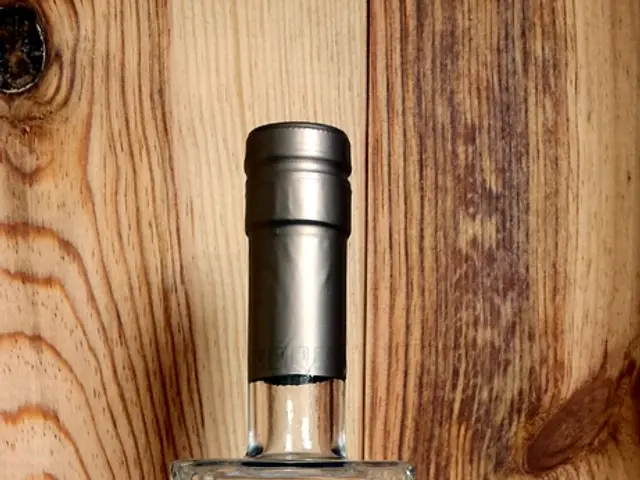Applying Hyaluronic Acid or Moisturizer First: A Skincare Layering Guide
In the quest for healthy, radiant skin, understanding the best practices for applying skincare products is crucial. One such practice that has gained popularity is the use of hyaluronic acid (HA) and moisturizer for optimal skin hydration.
To start, it's essential to cleanse your face, providing a fresh, clean surface. Pat your skin gently so it remains slightly damp, not completely dry. If your skin has dried, lightly spritz facial mist or water to maintain the slight dampness, as HA binds water best on damp skin.
Next, apply 2-3 drops of hyaluronic acid serum using gentle upward pressing motions, focusing on dry areas. Allow it about a minute to absorb fully before applying a moisturizer immediately after. This helps lock in the hydration drawn in by the HA, preventing moisture loss. The moisturizer acts as an occlusive barrier, sealing hydration in.
It's important to note that hyaluronic acid should always be applied before heavier creams, oils, or treatments. Layering HA after antioxidant serums like vitamin C can be effective if you wait for vitamin C to absorb first, then apply HA, and then moisturizer. Using moisturizers with ingredients like emollients and occlusives enhances the moisture retention benefits of HA.
By following this sequence - Cleanse, Apply HA on damp skin, Wait ~1 minute, Apply moisturizer - you maximize HA’s ability to attract and retain moisture for optimal skin hydration. Hyaluronic acid works best on damp skin because it grabs onto water and boosts hydration. Applying it to dry skin can cause it to pull moisture out instead.
In dry climates, pairing hyaluronic acid with a richer moisturizer helps keep your skin from feeling tight or dehydrated. For daytime, apply hyaluronic acid first, followed by a moisturizer, and always finish with sunscreen. For nighttime, use your moisturizer as the final step to lock in moisture and nourish your skin while you sleep.
If your moisturizer already contains hyaluronic acid, you can simplify your routine by applying it directly to damp skin to lock in hydration effectively. By keeping skin hydrated, hyaluronic acid helps minimize fine lines and wrinkles, and improves skin texture, making it smoother and more radiant.
In summary, the secret to optimizing skin hydration lies in the correct application of hyaluronic acid and moisturizer. By following the recommended steps, you can ensure that your skincare routine is working at its best, leaving you with healthy, radiant skin.
- For optimal skin hydration in your skincare routine, follow the sequence: cleanse, apply hyaluronic acid serum on damp skin, wait for about a minute, and then apply moisturizer.
- Hyaluronic acid should always be applied before heavier creams, oils, or treatments; it works best on damp skin because it attracts and retains moisture.
- In dry climates, pair hyaluronic acid with a richer moisturizer to keep your skin from feeling tight or dehydrated.
- In the daytime, apply sunscreen as the final step after moisturizer that contains hyaluronic acid to protect your skin from sun damage.
- For nighttime, use a moisturizer as the final step to lock in moisture and nourish your skin while you sleep.
- Ceramides in moisturizers can enhance the moisture retention benefits of hyaluronic acid, improving the overall health and wellness of your skin-care routine.
- Niacinamide serum, toner, and products formulated with skin barrier strengtheners can complement your skincare routine effectively, especially if you have sensitive skin.




